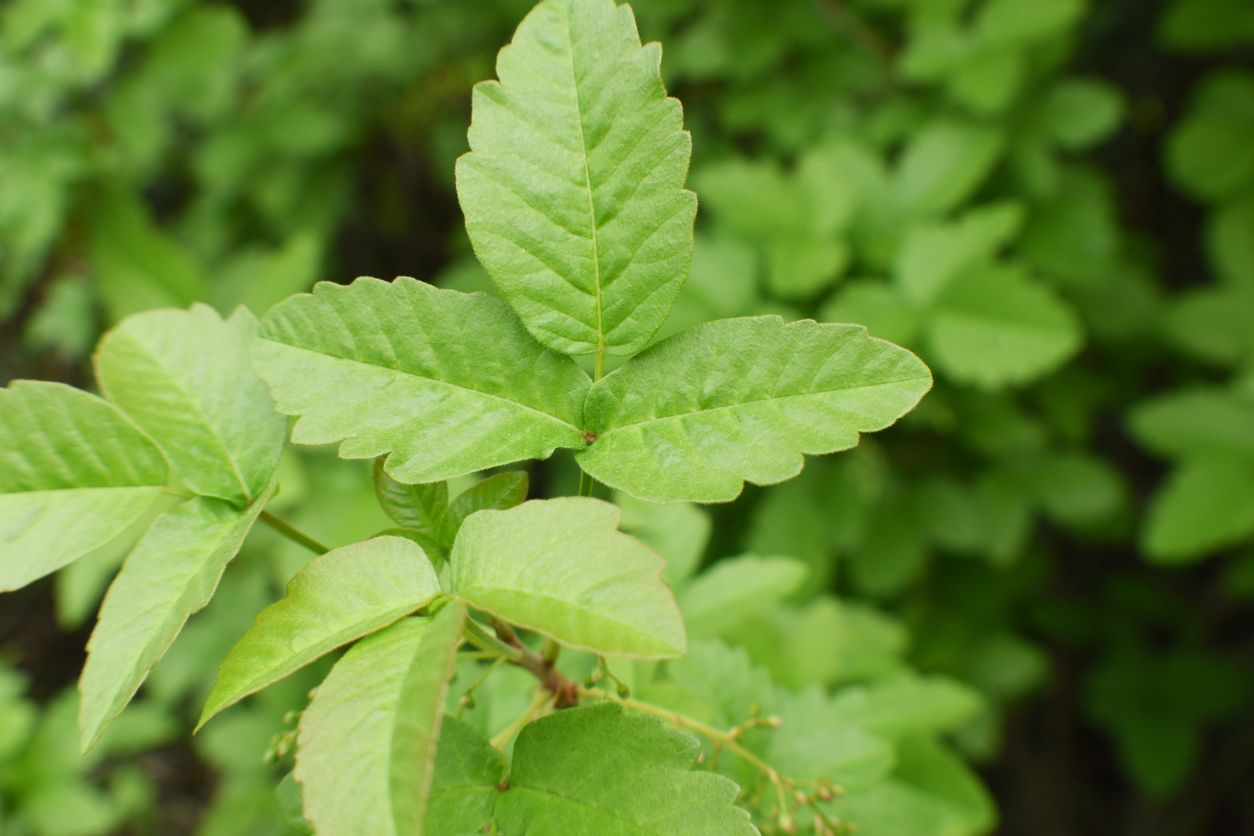The Poisonous Trio of Oak, Sumac and Ivy

The Poisonous Trio – Poison Oak, Poison Sumac and Poison Ivy
April showers bring May flowers. Be in awe but also be aware! While out on a hike, bike or climb, keep your eyes open for these poisonous plants. Poison oak, poison sumac and poison ivy are nearly everywhere in the U.S. But what do you look for?

To start, if it has “leaves of three”, let it be! In addition to having the signature cluster of three leaves, poison ivy and poison oak have hairy vines and hairy leaves, respectively. Use your fingers to tousle your own hat hair, and don’t mess with these wispy plants!
Poison oak’s shimmery green leaves turn into the season’s beautiful colors in the fall, and they can grow to be several feet tall. Not worth getting close for the photo opp.

Another key identifier of poison ivy and poison oak – their middle stem is often longer.
Poison sumac showcases a different deceiving beauty with it shiny, light-yellow berries. More woody in structure, poison sumac has clusters ranging from seven to 13 leaves.

These poisonous pals like to grow just off your favorite trails often near water. Staying on the trails is key but let’s face it, we all like to explore. The plants’ urushiol oil is the culprit so the trouble starts when it comes into direct contact with your skin. If that happens, try to wash with soap and cold water within 30 minutes…even under your fingernails.
Symptoms can vary but first comes the itching and then the rash. If you’ve experienced a reaction from interactions on previous adventures, the rash can appear quickly – within a few hours to a couple days. If it’s your first rub with this nasty shrub, it might take weeks for the rash to appear.
Long pants and sleeves do help but the oil can stick to your clothes and get absorbed by your skin so wash your clothing separately in the hottest cycle after exposure. Be sure to kick off those shoes and wipe down your walking poles and bike frames as the oil can adhere to all. Also, while our four-legged best friends may not be bothered by the poison ivy, oak or sumac, the oil can get tangled in their fur and then rub off on us. Bath time for all!
Don’t let all this discourage you from exploration but be informed and use caution. For more information on identification, geographical distribution, symptoms and first aid relating to poisonous plants, please visit: https://www.cdc.gov/niosh/topics/plants/identification.html